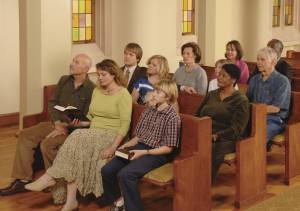Montreal is home to a number of beautiful historical churches. Although it might not be the city you think of when you consider religious history in Canada, it is home to four Roman Catholic basilicas. These churches stand out as a centre of liturgy in the church’s tradition. Only 1,580 churches around the world have been designated a basilica. Montreal houses a number of other stunning religious buildings. Here are seven churches that you should take time to visit and experience, even if you don’t belong to the faith.
Different Historical Churches in Montreal
- Church of La Visitation-de-la-Bienheureuse-Vierge-Marie – Although this church is not the oldest church in the city, it does have the oldest original structure and interior. It was finished in 1752, but the stained glass windows were not added until 1893. This structure does not have the exterior presence that some of the basilicas have, but the interior is absolutely breathtaking.
- Notre-Dame-de-Bon-Secours Chapel – Another very old church founded in 1655. The structure was rebuilt in the late 18th century on the ruins of another church. There’s a museum attached to the church where visitors can learn more about the church history and understand the importance of the altar painting.
- Saint Patrick’s Basilica – It took four years to construct this church, and it’s been preserved quite well since its completion in 1847. Saint Patrick’s claim is that it is the oldest English-speaking Roman Catholic church in the city. It houses more than 150 oil paintings. You might want to count the shamrocks or fleur-de-lis symbols.
- Church of Saint-Pierre-Apotre – Built in the mid-19th century, this church has also preserved its original interior. The only major change in the original was the installation of stained glass windows about 30 years after it was built. Make sure to visit the Chapel of Hope, which has been dedicated to the victims of AIDS.
- Saint Joseph’s Oratory – The Oratory is a national shrine and is Canada’s largest church. The architectural style is Renaissance. Stroll through the monumental walkway any season, but spring and summer are the best times to visit if you enjoy beautiful gardens. Plan to spend some time in the art museum, too.
- Notre Dame Basilica of Montreal – If you can’t make it to Paris to see the beautiful Notre Dame cathedral, visit this basilica in this local city. The pipe organ and wood sculptures make this church stand out as one of the city’s top attractions. This structure dates back almost 200 years to 1824.
- Church of Saint Genevieve – This church was founded in 1732. The structure wasn’t built until 1844, and it took another 20 years to finish the interior, which has been preserved for all to enjoy the beautiful white and gold colours. It’s a stunning monument that you shouldn’t miss.
Churches are vital to every community. The history of these churches tells a story about the people that helps us more deeply understand the city. Take some time to tour religious buildings and find out more about the heritage of your neighbors.




